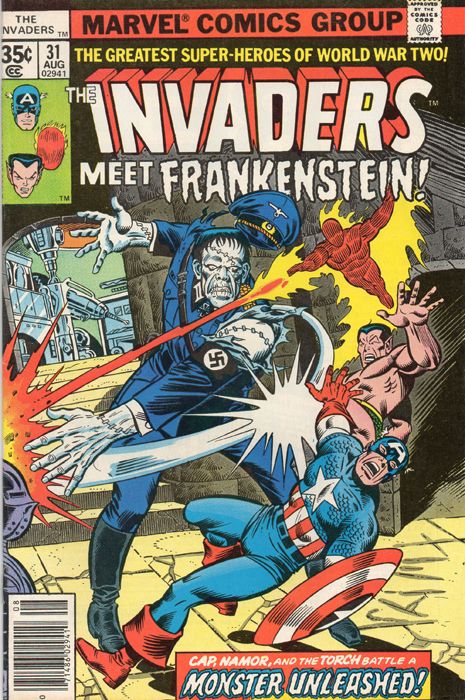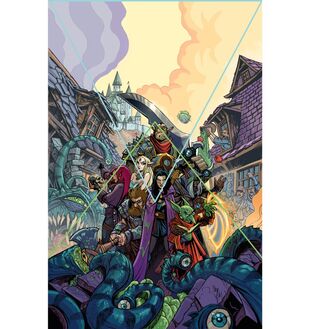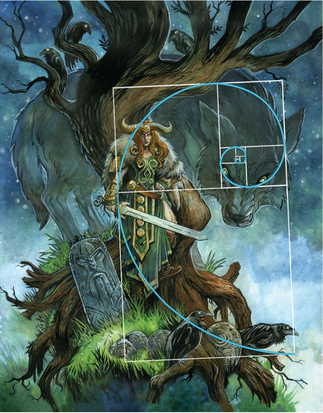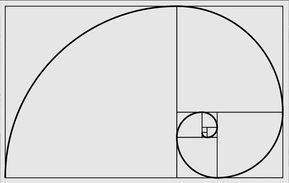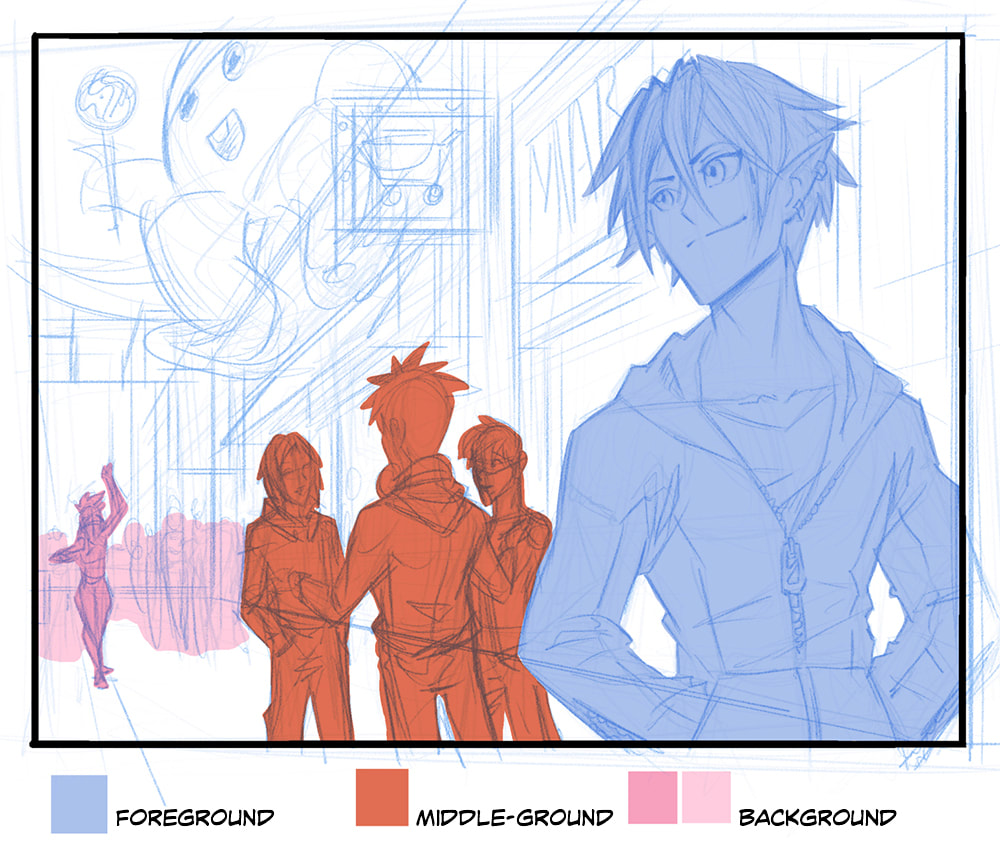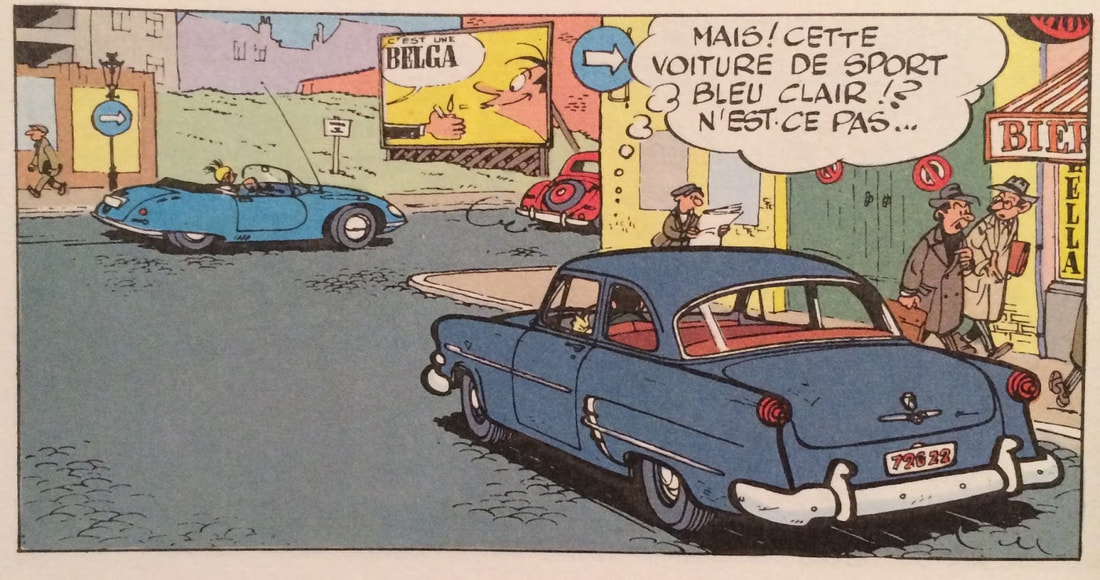HIERARCHY OF INFORMATION
Whats the story? - Which elements are crucial to telling the story, which are secondary, and which add tertiary support? This is how you figure out the hierarchy of elements in your piece.
Whats the story? - Which elements are crucial to telling the story, which are secondary, and which add tertiary support? This is how you figure out the hierarchy of elements in your piece.
DIFFERENT COMPOSITION LAYOUTS
The Rule of Thirds, The Golden Ratio, Overlapping Triangles and Dynamic Symmetry are all great starting points for creating visuallly interesting art. By mentally or literally creating one of these grids on your blank paper will guide you to where to place your hierarchy of elements that are crucial to telling your visual story.
RULE OF THIRDS
The Rule of Thirds works because it demands that the artist makes one element more dominant than another. This dominance creates an imbalance, and an imbalance of any sort will always attract the viewer's eye.
Bisecting an image perfectly in half creates the least amount of interest, because everything is equally balanced.
Making one area of your composition more dominant creates tension, and therefore adds interest. It also makes your eyes move around the canvas more to compare all of these relationships.
This states that if you divide any composition into thirds, vertically and horizontally, then place the key elements of your image either along these lines or at the junctions of them. You'll achieve a more pleasing arrangement. But does it work?
The Rule of Thirds works because it demands that the artist makes one element more dominant than another. This dominance creates an imbalance, and an imbalance of any sort will always attract the viewer's eye.
Bisecting an image perfectly in half creates the least amount of interest, because everything is equally balanced.
Making one area of your composition more dominant creates tension, and therefore adds interest. It also makes your eyes move around the canvas more to compare all of these relationships.
This states that if you divide any composition into thirds, vertically and horizontally, then place the key elements of your image either along these lines or at the junctions of them. You'll achieve a more pleasing arrangement. But does it work?
TRIANGLES
Compositions are often based around strong, simple shapes. Here, the heroes in this piece need to have an individual moment to themselves, but also to fit together as a team. Because a triangle is a strong shape the team has been composed so that its various elements led the eye to the orc paladin’s head (the green triangle). And because the background is also arranged as a downwards-pointing triangle (the blue triangle), it creates a diamond shape where the heads of the main figures are approximately placed. All of this is meant to pull the reader towards the expressions on the characters’ faces.
Compositions are often based around strong, simple shapes. Here, the heroes in this piece need to have an individual moment to themselves, but also to fit together as a team. Because a triangle is a strong shape the team has been composed so that its various elements led the eye to the orc paladin’s head (the green triangle). And because the background is also arranged as a downwards-pointing triangle (the blue triangle), it creates a diamond shape where the heads of the main figures are approximately placed. All of this is meant to pull the reader towards the expressions on the characters’ faces.
|
GOLDEN RATIO
Sometimes, dynamic symmetry doesn't feel right for a piece and this is where The Golden Ratio is most useful. This Greek mathematical equation expresses itself as a spiral. Many of the most famous pieces of art use this ratio to decide on the placement of elements and as a natural way to lead the eye across an image. It’s so embedded in our natural world and our humanity that we often use the ratio without realising it. |
DYNAMIC SYEMETRY
|
|
|
TOOLS TO GUIDE YOUR VIEWERS EYES
Implied Lines, Focal Lines, and Foreground/Middleground/Background are tools to help guide the viewers eyes through your artwork almost like a map telling you where to go. First go here, then go here, then here, and now maybe loop back to the start to reanalyze with our newly found information. Consider your hierarchy of information and what order you want your viewers to read your story.
IMPLIED LINES
|
In art, implied lines aren’t drawn, but they are created with colors, shadows, shapes, textures, and spaces between objects. Their purpose is to guide the viewer’s eyes within the artwork and emphasize certain elements. These are probably the most important aspect of a composition, because you notice them first. When painting realistically, there's no actual line around a subject. The illusion of a contour is a result of different values and colours contrasting. But even the impression of a line is strong, and our eyes will go to it and follow its length until it ends, or until it meets another line, which we'll follow again. A great composition makes strong use of this natural attraction to lines. Sweeping action or movements across a piece will draw the eye from one side of a composition to the other. Using strong, direct action lines built into elements of the picture can move the eye to the point you want. In non-action pieces or in the calmer areas of action scenes, use elements such as flowing cloth, curling smoke or even directional brush strokes in the sky – all subtle trails that the eye can follow to the image’s focal point. Here, the waves, the tentacles and the shape of the sail direct the eye. |
FOCAL LINES
|
As well as using implied lines to draw the eye all around a composition, you can use the same method to make someone look immediately at your chosen focal point.
In fact, you can do it repeatedly, from multiple directions. This is particularly useful when your image is a portrait or a pin-up, and the character's face is the most important element. To bring more attention to a particular character, try to make surrounding objects, such as arms, swords and buildings, point to your subject. You can also use implied lines to frame the subject's face, locking the viewer's eyes in place. |
|
FOREGROUND, MIDDLEGROUND, BACKGROUND
The foreground element allows the viewer to enter the picture. The middleground adds a component that holds the viewer's interest. The first two layers should lead the observer to the background element to complete the image. To have all three elements work in harmony helps improve the flow of your image and narrative
The foreground element allows the viewer to enter the picture. The middleground adds a component that holds the viewer's interest. The first two layers should lead the observer to the background element to complete the image. To have all three elements work in harmony helps improve the flow of your image and narrative
|
PERSPECTIVES AND "CAMERA" ANGLES
Whether you want your characters to seem powerful, vulnerable, or intimate, the power of camera angles cannot be understated. |
|
THE ASSIGNMENT
The process of creating engaging art can look similar similar to writing a well thought out and engaging paper. Brainstorming / Outline / Rough-Draft / Final-Draft. We have done our brain storming and now we need to start thinking about our "Outline". In art the outline is called out thumbnail sketch. We can use these to get an idea of a success composition, flow, and narration through rough sketches. These sketches can help us understand whats working and whats not rather than jumping straight to the final draft and hoping for the best. Thumbnail sketches are smaller versions that are rough and include maybe 10% of the detail of a finished work. |
|
REQUIREMENTS
- 4 thumbnail sketches for your self portrait project.
- each needs to be done with a different composition set of composition layouts and tools
- each sketch should be roughly 4in x 6in
- Take notes on /next to your composition including but not limited to
- why and how you used the different techniques - example: sword creates line to eyes, high angle to emphasize insecurity, main element should land on intersection to draw viewer eye
- possible colors or materials
- reminders for yourself
- Take a clear photo of each composition and submit to schoology
